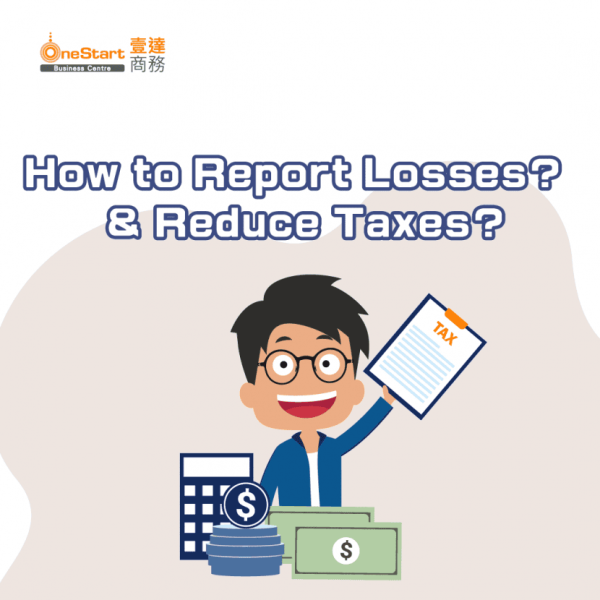Related Article:
When to File Taxes? Decoding the Hong Kong Company Tax Filing Schedul
Profits Tax in Hong Kong Explained, 3 Tips for Easy Tax Return
Table of contents |
Filing taxes is one of the most important annual tasks for businesses. Whether profitable or loss-making, all companies must report to the Inland Revenue Department (IRD). Many business owners may wonder: Do we still need to file taxes if the company is running at a loss? The answer is affirmative. This article will explore in detail how Hong Kong companies should report losses and how this affects tax calculations, enabling you to handle tax filings more effectively.
1. Definition of Losses for Hong Kong Companies
To understand how to handle business losses, it’s crucial to differentiate between “accounting losses” and “tax losses”.
Distinguishing Between Accounting Losses and Tax Losses
Accounting Losses: These occur when a company’s annual expenses exceed its income, as recorded in financial statements. These records follow accounting standards and reflect the company’s actual operational status during the fiscal year.
Tax Losses: Tax losses are calculated according to Hong Kong tax laws. While similar to accounting losses, the IRD has its own rules and adjustments. Certain expenses recognized in accounting may not be considered deductible items for tax purposes. Therefore, businesses need to adjust accounting losses in accordance with Hong Kong tax ordinances to determine the final tax loss.

2. How to Report Company Losses
Companies must submit a Profits Tax Return to the IRD annually, even if the company is not profitable or is experiencing losses.
Completing the Profits Tax Return
The first step in reporting company losses is to correctly fill out the Profits Tax Return. During this process, businesses need to clearly state their loss situation in the appropriate fields.
Relevant Sections for Reporting Company Losses
The tax return has designated fields specifically for reporting company losses. Fill in the tax loss for the year in the relevant section and attach financial statements, including the balance sheet, profit and loss statement, and other documents. Moreover, if the company has accumulated losses from previous years, these can be listed in the schedule of the tax return. You can apply to carry forward these losses to offset future tax liabilities, effectively reducing future tax burdens.
Required Supporting Documents
To authenticate the reported loss data, businesses need to provide the following supporting documents:
- Audited financial statements
- Bank statements
- Relevant expense and income receipts
- Other business documents related to the loss
These documents help the IRD verify whether the company’s loss report is genuine and accurate.

3. Losses and Tax Reduction
Businesses can use losses to help reduce future tax burdens.
How to Use Losses to Reduce Future Tax Liabilities
According to Section 19C(1) of the Inland Revenue Ordinance, businesses can carry forward tax losses indefinitely to offset taxable income in future years until the losses are fully utilized against assessable profits. If a business incurs a loss in one year, these losses can be carried forward to profitable years in the future, reducing the profits tax payable for those years.
Example: If a company incurs a loss of HK$500,000 in 2023 and earns a profit of HK$500,000 in 2024, the profit will be completely offset by the 2023 loss, and no profits tax will be payable in 2024.
Can Losses be Transferred Within a Group?
Although in Hong Kong, a company’s internal losses can be carried forward indefinitely, losses cannot be transferred between member companies within a group. Even if Company A in the group incurs a loss, these losses cannot be used to offset profits from other companies within the group.

4. Conclusion
Even when businesses in Hong Kong incur losses, through correct reporting procedures, companies can carry forward losses to future years, reducing future tax burdens. Regardless of company size, utilizing the loss reporting system is an integral part of corporate tax strategy. For Hong Kong businesses, tax filing is a complex matter that requires careful handling, especially when the company is dealing with losses. Companies should actively cooperate with accountants and tax advisors to ensure the accuracy and legality of their reports, avoid unnecessary fines, and utilize losses to achieve lawful tax reductions in the future.

















